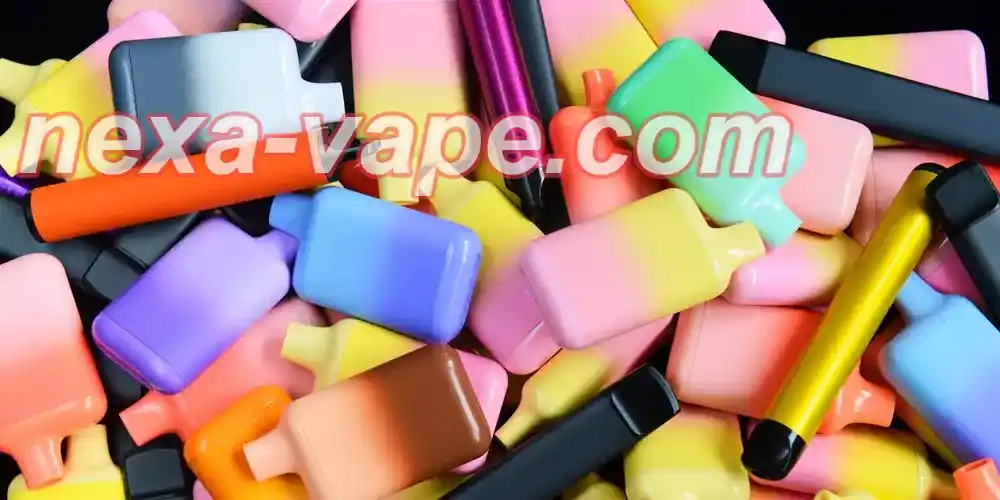The Increasing Puff Count of Disposable Vapes: Market Trend or Innovation Bottleneck?
Vapes, especially disposable vapes, have quietly become a part of modern urban life. Who would have thought that, in the near future, "smoking" would evolve into a tech-savvy, stylish activity, no longer the traditional awkward experience of lighting a cigarette and coughing uncontrollably? With advancements in technology and fierce market competition, disposable vapes now offer more and more puffs, with some products even claiming to provide up to thousands of puffs in one device.
But behind this change, is it an explosion of innovation in the industry, or is it a result of market stagnation and technological limitations forcing manufacturers to "increase the puff count" to attract consumers? Let’s explore.
1. The Puff Count Surge: Do You Really Need Thousands of Puffs?
In the world of vapes, the term "disposable" once implied a short-lived experience. However, with the introduction of new products, user demand has shifted from initial convenience and novelty to a desire for a more long-lasting experience. Love Nexa Vape? Then you’ll definitely want to grab this new release. As a result, the puff count of vapes has skyrocketed. The earliest disposable vapes offered around 150 to 300 puffs, but now many brands claim their products can provide 10,000 puffs, 30,000 puffs, or even as many as 50,000 puffs.
This shift reflects not only changing consumer preferences but also the efforts of brands trying to stand out. If they want consumers to feel they’re getting "more for their money" when buying a vape, they focus directly on increasing the puff count, creating a perception of greater value.
2. The Motivation Behind the Increased Puff Count: Is It Demand or an Innovation Dilemma?
1. Long-Term Consumer Demand
There was a time when the number of puffs wasn't a primary concern for consumers. What mattered most was convenience, design, and flavors. But as vaping becomes an everyday part of life, there’s been a shift towards longer and more frequent usage. For heavy users, a higher puff count not only satisfies their actual usage time but also brings economic benefits. After all, a vape that lasts for hundreds of puffs is clearly more cost-effective than a small disposable vape that requires frequent replacements.
2. The "Quantity Over Quality" Strategy in the Face of Competition
In today’s vape market, where brands are competing fiercely, manufacturers have to resort to various tactics to capture consumers' attention. The more puffs a product offers, the more tangible "value" it seems to provide. Behind this, however, lies the issue of product homogeneity. When manufacturers find it increasingly difficult to innovate technologically or differentiate their products, simply "increasing the puff count" becomes the most straightforward market strategy.
3. Technological Advancements: The Perfect Combination of Battery and Atomization Technology
However, the increase in puff count isn’t just empty marketing. It’s backed by some technological advancements. First, improvements in battery life and liquid capacity have made it possible for disposable vapes to offer more puffs. Early vapes had relatively short battery lives, but with the continuous progress in lithium battery technology, modern batteries can store more power in smaller sizes, supporting thousands of puffs.
Meanwhile, atomizer technology has also evolved. New materials for atomizer coils, like ceramic coils, ensure that the liquid vaporizes more evenly, with greater stability, improving the consistency of flavors throughout the device’s life.
4. The Innovation Bottleneck: Can Increasing Puff Count Solve Everything?
That said, does increasing the puff count really meet the core needs of consumers? Relying solely on puff count as an innovation strategy might be a bit too simplistic. We can't ignore the fact that the push for higher puff counts might stem from a lack of technological breakthroughs. After all, the core competitiveness of a vape isn't just the number of puffs but also the flavors, smoking experience, safety, and other factors. Relying solely on puff count to attract consumers is clearly a one-dimensional strategy.
3. The Pros and Cons of Increasing Puff Count in Disposable Vapes: Is It Really a "Good Thing"?
Advantages:
- Cost-Effectiveness and Value Perception For heavy users, a vape with a higher puff count is clearly more appealing. For example, if a 1,000-puff vape and a 200-puff vape are priced the same, the cost per puff is much lower for the larger one. This increased cost-effectiveness encourages more consumers to choose high-capacity products, boosting market sales.
- Longer Usage Experience For habitual vape users, a higher puff count reduces the frequency with which they need to replace their device, leading to a more continuous experience. The “buy once, use for longer” benefit is clearly more convenient than frequently replacing smaller-capacity vapes.
- Less Waste Some might argue that the continuous use of disposable vapes reduces "waste" since both the liquid and the battery aren’t quickly depleted. This is also a positive environmental factor, especially since some disposable vapes are made with less eco-friendly manufacturing processes and materials. Reducing the frequency of replacements means fewer resources are consumed.
Disadvantages:
- Larger Size, Reduced Portability As the puff count increases, the size of the vape typically becomes larger to accommodate bigger batteries and more liquid capacity. For consumers who prioritize portability, a bulky vape may not be as attractive. Especially when going out, carrying a large vape might be less convenient.
- Battery and Liquid Capacity Balance As disposable vapes offer more puffs, both the battery and liquid capacity increase. However, the improvement in battery life doesn’t always correlate with liquid stability. Long-term use can cause the liquid to taste different, or even leak, which negatively impacts the user experience.
- The Innovation Bottleneck Deepens As mentioned earlier, relying solely on increasing puff count to attract consumers might mask the innovation bottleneck in flavors, vapor experience, and other critical aspects. If manufacturers only use this approach, the room for innovation in vape products will shrink, and the diversity and differentiation of the market will gradually disappear.

4. The Potential of the "Puff Revolution" in Disposable Vapes from a Technical Perspective
1. The Future of Atomization Technology
With the emergence of new materials like ceramic and metal alloy atomizer coils, vape atomization technology is maturing. This means that even as puff counts increase, vapes can still maintain high levels of stability and flavors quality. Future technological advancements might allow vapes to continue increasing puff counts without sacrificing taste.
2. Breakthroughs in Battery Technology
More powerful battery technology, especially ultra-high energy density batteries, will greatly enhance the battery life of disposable vapes without increasing their size. As technology progresses, we might see more efficient and safer compact batteries that can support larger-capacity vapes.
3. Optimizing Liquid Formulations
The longevity of flavors and the stability of the liquid are also key directions for vape development. In the future, vapes might use more stable and less perishable liquid formulations, ensuring that the taste remains fresh and consistent even with prolonged use.
Quantity Doesn’t Always Lead to Quality
The increase in puff count of disposable vapes is the result of both market demand and technological progress. While it offers consumers longer usage and better cost-effectiveness, it also exposes the industry’s innovation bottleneck. If manufacturers rely too heavily on puff count as a strategy and neglect improvements to the essence of the product, this "quantity change" may not lead to a "quality change." The future of the vape market will still need more technological innovation and diverse product experiences to truly meet the growing demands of consumers.
